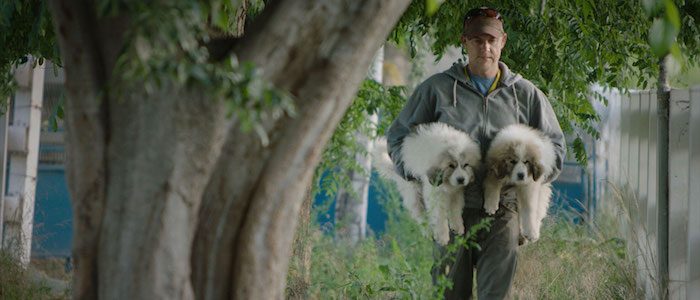‘The Biggest Little Farm’ Review: A Solution-Oriented Breath of Fresh Air in an Age of Catastrophe

It’s difficult to not begin with a dour note but the global realities stipulate that I must. I type this review as the scary-but-scientific United Nations headlines loom over all of us—biodiversity in crisis—which has fatal implications for animals and the human race. The climate catastrophe headlines are unpleasant but the maximum negative outcome must be expressed, or else we will be more unequipped for later.
A day before the headline foreboding the price of decaying biodiversity, I viewed The Biggest Little Farm, a documentary about the personal journey of John and Molly Chester starting a biodiverse farm. Their local effort won’t fully counterpoint the headlines with global implications, but it shines a light on a local level. The doc opens on a dour climate-catastrophe note as well: distant California wildfires threatening the acres in its later years. While the film alludes to the changing and fickle scope of the globe and ponders its mortality, it refrains from the vocabulary of “climate change” or “climate catastrophe” when said climate-change related factors pop up. But overall, the Chesters’ burgeoning farm experience is a microcosm of what positive collaboration can cultivate.
John and Molly Chester are an L.A. couple living in the city, clinging to a pipe dream of farm life. Then their barking rescue dog stirs trouble with their landlord. They decide to make the impossible dream a reality. Their vision for Apricot Lane Farms involves co-existence with wildlife and maximum biodiversity and outdoor comfort for the livestock. They attain investors and they acquire dead acres at their whim at Moorpark, California. The Chesters come into their farm life with wide-eyed naivety, high spirits, and an openness to adapt. They recruit their friend and consultant, Alan York, who accommodates them with wild ideas. If you were to have a beer with a man like Alan, I suspect it would be easy to be skeptical of his rambly ideas. But his consultancy, far beyond his death midway through the film, ends up benefiting the farm, even if the results fluctuate.
The barnyard critters become delightful players that would arrest the attention of young and old viewers alike. The camera makes us fall in love with the dog, whose incessant barking drove them out of the city; Emma (once called Ugly Betty), the personable dirt-loving pig; the ruffly rooster who hangs around Emma to the point he’s jokingly called Emma’s “boyfriend.” Even coyote predators plaguing their chicken population become players in their biodiverse design, as John undergoes a laborious arc of figuring how coyotes can be redirected into playing their beneficial role in the ecosystem.
Across eight years, John guides us through the beginnings, solutions, setbacks, and revelations. For every blossoming crops, problems fly in. In the early years, wildlife seeps into their lives, as intended, but it provokes complications when wildlife pests and predators devour their harvest and livestock, but luckily, the Chesters and their team find ways to forge harmonious relationships with them. Even troublesome critters and maggots and snails become part of an unraveling and expanding food chain that revives old wildlife cycles on once-dead land.
As an Emmy award-winning filmmaker, John Chester hones his craft with synergic intensity. He weaves in hand-drawn animation of a children’s illustration, drone-shots drinking in a once-barren landscape now flourished with greens and colors, and night-vision surveillance that illuminates a suspenseful sequence of coyotes dashing after gophers. The Biggest Little Farm is well compacted and focused. Some audience questions may include whether Apricot Lane Farms is ethically compensating their farmhands/volunteers (it isn’t all that clear) and if the editing was right to dodge the subject of slaughtering animals (checking the farm website, they do sell meat, labeled as “pasture-raised”). Though to its credit for the latter question, as it lets us solemnly watch Emma’s grown piglets being taken away, it lets us absorb the bittersweetness of the farming system.
Its viewers have plenty to reap from. The doc avoids the pastoral romanticism while earning its paradisiacal possibilities. It notes the precariousness of the Earth’s health, the fact that sometimes the farm’s welfare has to rely on the wild card of California weather, which has been worsening over the years. It sheepishly admits it relies on chance and nature attacks without their control. While deliberately avoiding urgent tones, The Biggest Little Farm plows through its struggles and synergy. It shares its infectious action-driven optimism nourishing a Mother Nature dream. It’s just one example to follow in this world.
/Film Rating: 8 out of 10
The post ‘The Biggest Little Farm’ Review: A Solution-Oriented Breath of Fresh Air in an Age of Catastrophe appeared first on /Film.
from /Film http://bit.ly/2E7FV5O
No comments: